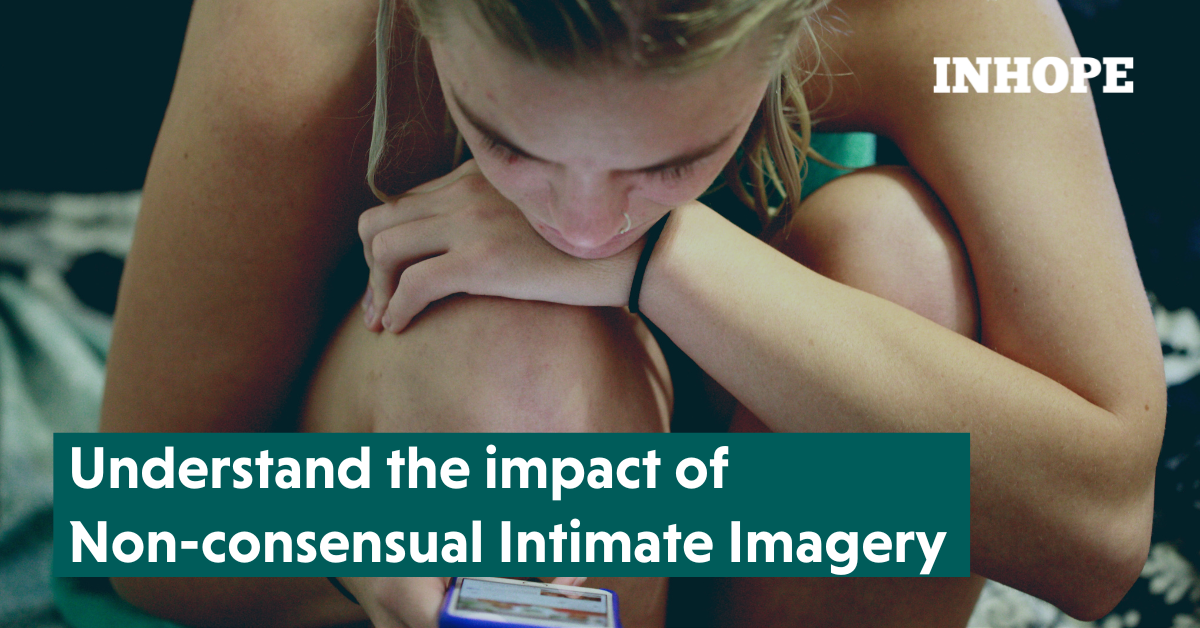Article
Educational Articles
Industry News & Trends
Understand the impact of Non-Consensual Intimate Imagery
Self-generated Child Sexual Abuse Material (CSAM) is sexually explicit content created by and featuring children below the age of eighteen. These images can be taken and shared intentionally by minors but are in many cases a result of online grooming or sextortion. Non-Consensual Image (NCII) abuse and Self-Generated CSAM are often interchangeable, while self-generated content can refer to both consensually and non-consensually produced intimate images.
What is considered non-consensual distribution of intimate images?
If an individual chooses to share their own intimate images with someone, for example, through sexting, this does not give the recipient the right to distribute this material. The non-consensual sharing of consensual images is a peer and partner-related form of sexual exploitation and a common example of NCII abuse (read the ECPAT Sweden “The consequences of sharing non-consensual content” webinar recap on inhope.org) that violates both the victims’ trust and privacy. And when involving minors it constitutes the sharing of CSAM.
How do offenders get victims to produce self-generated (consensual or non-consensual) content?
While the phrase “self-generated” implies that the individual is producing the content themselves, in many cases the individual is being instructed or coerced into generating the content. The production of this content may be coerced by the offender, which is why the use of the term is often debated due to the fact that it implies consensual participation. The following are examples of coerced self-generated content:
- Grooming: defined as intentionally building a relationship with a minor (usually a child) in order to lower their inhibitions and prepare for sexual activities (offline, online or both). This behaviour is calculated and is usually for sexual or financial purposes.
Offenders begin by targeting their potential victim often via a close connection (within their close friend - or family circle) or by creating and using fake profiles online. Next, they gain access by establishing trust (using attention, gifts, etc) and develop that trust by becoming a consistent presence in the child’s life. Children are often unaware as the initial interaction appears friendly as the perpetrators actively work to blur the lines between normal and abnormal relationships. Once trust is established the groomer starts to desensitise the child to sexual content and use secrecy and shame, and in some cases, perpetrators might utilize self-generated intimate images.
- Sextortion: Sexual extortion, also called “sextortion,” is a kind of blackmail. Our US hotline NCMEC has received 262,573 reports of Online Enticement since 2016, the category that includes sextortion. The perpetrator demands sexual favours, money, or other benefits under the threat of sharing intimate or sexually explicit material. Sextortion can result from the following: sharing a single consensual intimate image, an image that is coerced through grooming, unknowingly produced intimate images (for example: the recording of a live stream or by hacking a device), by the offender posing as someone else to coerce the production of an intimate image and even by pretending to already have intimate images of the individual.
Note: Regardless of how the perpetrator obtains the material, the fear of the material being shared among the victim’s network may cause extreme feelings of shame, anxiety and helplessness.
Find out more about this rising trend, click here to read part two of this three-part mini-series on NCII abuse.
